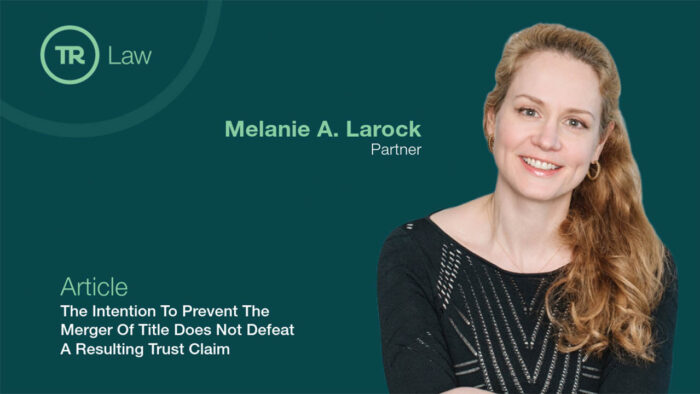The Use or Operation of an “Automobile”
Statutory Accident Benefits are available to every person injured in a motor vehicle accident, regardless of fault. These benefits are available only where the injury arises “directly” out of the use or operation of a motor vehicle. Where an insurer claims the injury was not directly caused by an accident involving a motor vehicle, it can be years before the injured person receives any money. This is because the insurer is treating the policy as providing no coverage at all.
In a recent accident benefits case we handled for two young clients, Johnston and Peel Mutual Insurance Company1, a dispute arose as to what constitutes an accident under the Statutory Accident Benefits Schedule – Accidents on or after November 1, 19962 (the “SABS”). This outcome was vitally important for one of our young clients who had sustained a catastrophic injury.
The Facts
Our young client, D.J. (aged 9), was severely injured when he was struck by a trailer after it had been removed from the back of a vehicle. D.J., and his 11 year old brother, O.J., were traveling in a pickup truck, operated by their cousin, towing the trailer. The cousin’s intention was to deliver the trailer to their uncle’s home. Once they arrived at the home, the truck, with the attached trailer, backed up the incline of the concrete driveway of the home. The boys exited the vehicle and watched as their cousin disconnected the trailer from the truck. Unfortunately, the trailer was not properly secured. Once he was finished detaching the trailer from the truck, the cousin entered the truck to drive it away. As he began to slowly drive off, he instructed the boys to run into the truck to see who would ride in the front seat. Before D.J. could get into the truck, he noticed that the trailer had begun to slide down the driveway and he attempted to stop it. As a result of the momentum of the trailer, D.J. was pushed into a large concrete utility pole adjacent to the driveway. Tragically, he was crushed between the trailer and the utility pole. O.J. witnessed the entire event.
D.J. suffered a significant brain injury as a result of the incident. He was intubated for nine days and was placed in an induced coma. His injuries met the requirements of the “catastrophic” designation in the accident benefits scheme in that he suffered a brain impairment resulting in a score of 9 or less on the Glasgow Coma Scale (GCS). D.J. remained in hospital and/or a rehabilitative treatment center for nearly 6 months after the incident.
It was obvious that D.J. urgently required attendant care and medical/rehabilitation benefits. Further, he was going to require substantial attendant care benefits and non-earner benefits into the future as his capacity for work, if any, would be greatly diminished due to his catastrophic brain injury.
Use or Operation of an Automobile
Despite the severity of our clients’ injuries, the insurer denied coverage, alleging that the injury was not caused directly by the use or operation of a motor vehicle. A trailer, they argued, is not a motor vehicle. We claimed there was coverage, arguing three alternative positions. First, it was the movement of the pickup truck that caused the trailer to move, leading directly to the sequence of events causing injury. Second, the pickup truck moving down the driveway was the dominant feature of an uninterrupted sequence of events which lead to the injuries, as there was no intervening act which broke the chain of causation. Third, the trailer qualified as an “automobile” as that term is defined in the Insurance Act3.
The Arbitrator found that the incident was an accident as it resulted from a well-known activity to which automobiles are put (i.e. towing a trailer) and that the truck caused the accident (i.e. had the truck not moved, the trailer would never have moved as it was never truly secured without the truck). The Arbitrator also addressed our alternative argument, namely, whether the trailer could be an “automobile” for the purposes of the SABS. The Insurance Act, the enabling legislation of the SABS, defines an automobile as a motor vehicle required under any legislation to be insured by a liability policy and one proscribed by regulation to be an automobile4.
Under the Ontario Automobile Policy, any trailer “used in connection with an automobile” is considered insured for accident benefits5. Thus, a trailer should be considered an “automobile”, as defined in the Insurance Act, if it were being “used in connection with” another vehicle at the time of the incident.
We argued that the trailer was being used in connection with the truck, as the process of both connecting the trailer to the truck and disconnecting it from the truck was part of the use of a trailer, which would attract the definition of automobile. Further, since the trailer was not properly secured, the process of disconnecting the trailer from the truck had not been completed, as it was the act of moving the truck away from an improperly secured trailer that allowed the trailer to be in motion.
Ultimately, the Arbitrator agreed that without the trailer being secured properly after being removed from the hitch of the truck, the disconnection process was incomplete. Accordingly, the Arbitrator concluded that the trailer was an automobile and that the boys were entitled to Statutory accident benefits.
The insurer appealed the decision6. The Director’s Delegate hearing the appeal considered whether the time, proximity, activity and risk involved indicated that the trailer was being used “in connection with” the truck. Due to the trailer moving shortly after it had been disconnected from the truck, the fact that the trailer was very near to the truck and the risk created for those nearby, the entire event was found to be one continuous action. Therefore, the trailer was still being used “in connection with” the truck at the time of the incident. The appeal was dismissed.
The Director’s Delegate did disagree with the Arbitrator’s finding that the truck was the direct cause of the accident. The trailer was the direct cause of D.J.’s impairments, not the truck. As the trailer was found to be an automobile, D.J. had suffered injuries directly caused by the use or operation of an automobile, in any event.
Following the appeal, a substantial settlement was reached which included a considerable portion of interest arising from the delay in providing these necessary benefits to the boys, which they were entitled to.
Where the injured party intends to challenge the insurance company’s denial of coverage there are steps that can be taken to protect the rights of the injured person pending the outcome of the dispute resolution process. Establishing the claim for benefits by submitting all the claims despite the denial will help preserve the injured person’s claim for interest on outstanding claims should success be achieved.
1 FSCO A06-002668 and A08-002218.
2 Ontario Regulation 403/96, as amended [“SABS”].
3 R.S.O. 1990, c. I.8, as amended [“Insurance Act”].
4 Ibid. at s. 224(1).
5 s. 2.2.5 of the standard Owner’s Policy approved for use on or after January 1, 2007.
6 Peel Mutual Insurance Company and Johnston, Appeal Order P09-00003.
Share this








